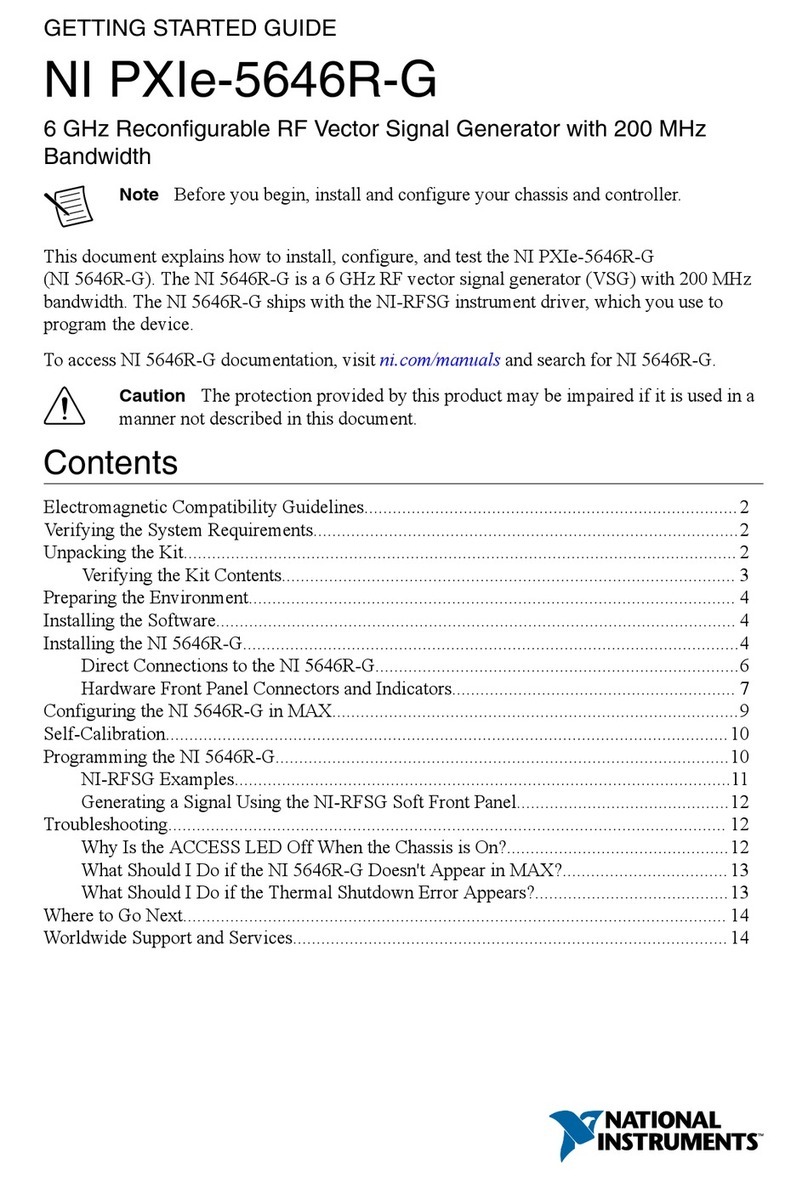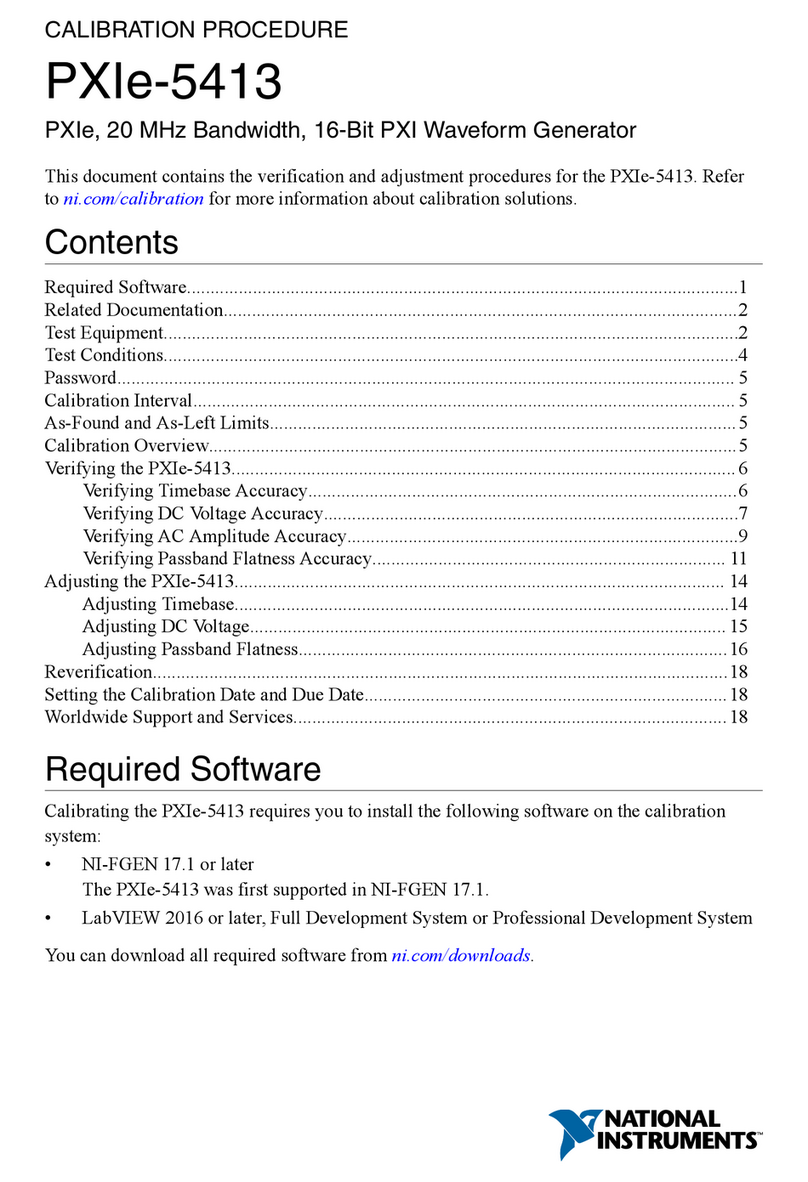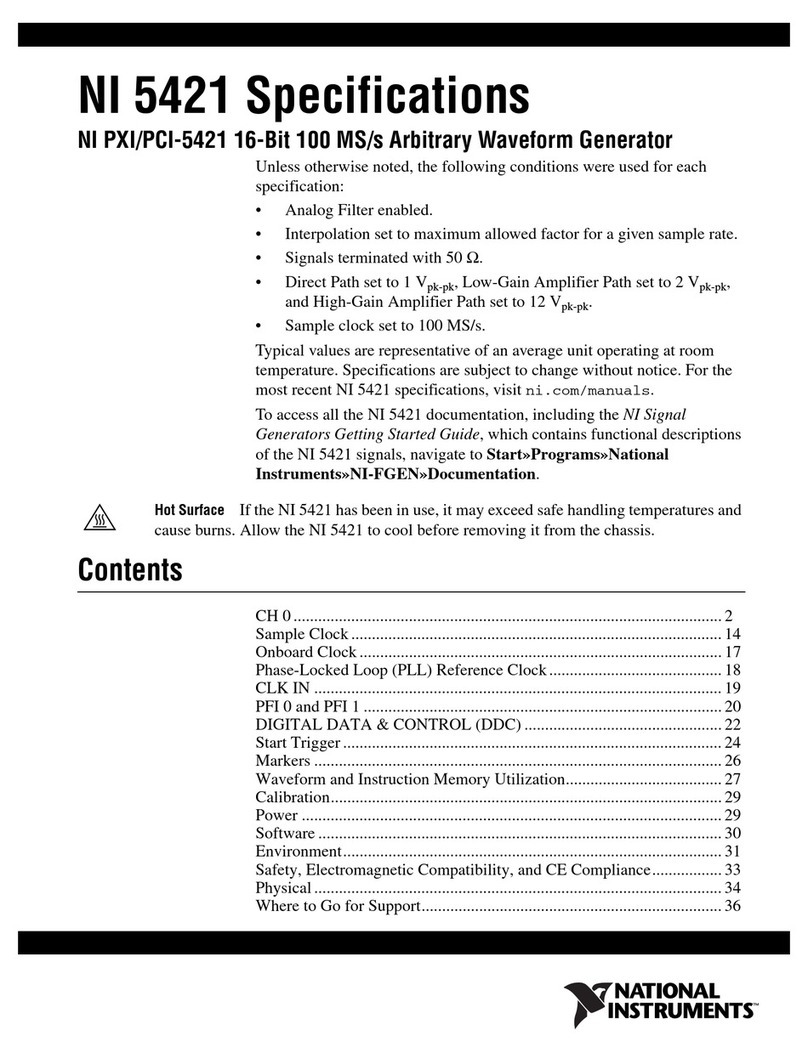
CALIBRATION PROCEDURE
NI PXI-5404
This document contains step-by-step instructions for writing a calibration procedure for the
NI PXI-5404 100 MHz Frequency Source.
Contents
Calibration Overview ............................................................................................................... 2
What Is External Calibration? .......................................................................................... 2
Why Should You Calibrate?............................................................................................. 2
How Often Should You Calibrate?................................................................................... 2
Equipment and Other Test Requirements................................................................................. 2
Test Equipment................................................................................................................. 2
Test Conditions.................................................................................................................4
Documentation.................................................................................................................. 4
Software............................................................................................................................ 4
Writing Your Calibration Procedure ........................................................................ 4
Calibration Software................................................................................................. 4
Calibration Procedures in C...................................................................................... 6
Calibration Procedures in LabVIEW........................................................................ 6
Calibration Procedures in Visual Basic .................................................................... 6
Verification ............................................................................................................................... 7
Verifying Frequency Accuracy ........................................................................................ 8
Verifying SINE Out Amplitude Accuracy ....................................................................... 9
Verifying SINE Out Amplitude Passband Flatness.......................................................... 10
Verifying CLOCK Out Duty Cycle Accuracy ................................................................. 13
External Adjustment ................................................................................................................. 14
Overview of Calibration Constants .................................................................................. 14
VCXO DAC ............................................................................................................. 14
GAIN DAC............................................................................................................... 15
SYNC DAC .............................................................................................................. 15
Setting Up and Configuring the NI 5404.......................................................................... 15
Adjusting the NI 5404 ...................................................................................................... 16
Adjusting the VCXO DAC for Frequency Accuracy ............................................... 17
Adjusting the SINE Out Amplitude.......................................................................... 20
Adjusting the CLOCK Out Duty Cycle.................................................................... 25
Closing the Calibration Session........................................................................................ 28
Calibration Function Reference................................................................................................ 28
Where to Go for Support .......................................................................................................... 48































